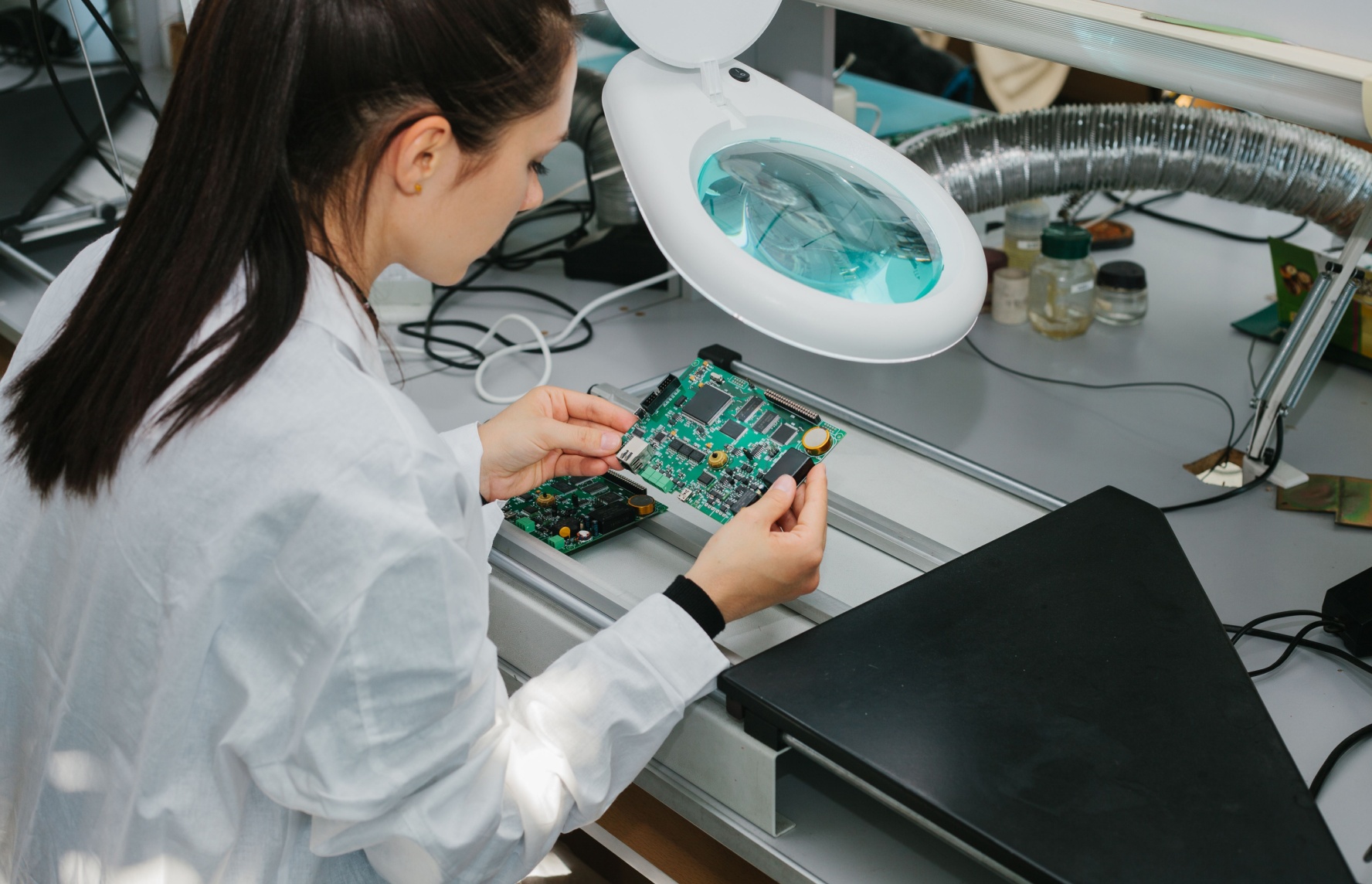A new study set for presentation at the Brookings Papers on Economic Activity (BPEA) conference on September 25 reveals that the $52.7 billion CHIPS and Science Act, enacted in August 2022, led to the creation of between 42,465 and 54,385 direct and indirect jobs—exceeding initial projections—while boosting wages in 149 counties with semiconductor operations. n nResearchers Bilge Erten of Northeastern University and Joseph E. Stiglitz and Eric Verhoogen of Columbia University conclude that industrial policy can yield tangible employment outcomes in targeted high-tech industries, even within a short timeframe. n nTo isolate the impact of the CHIPS Act from other federal spending initiatives like the Inflation Reduction Act, which passed shortly afterward, the authors applied a “differences-in-differences” methodology. They analyzed quarterly employment and wage data from the Bureau of Labor Statistics and U.S. Census Bureau through 2024, comparing counties with existing semiconductor manufacturing to those with other high-tech industries but no chip production. n n“The logic is that both groups would follow similar trends absent the CHIPS Act. We therefore examined how semiconductor counties diverged from the trajectory of comparable high-tech areas,” explained Verhoogen in a conversation with the Brookings Institution. n nFindings indicate direct job creation ranging from 14,900 to 20,860 in semiconductor fabrication and associated equipment and materials production. Additionally, indirect employment rose by 27,565 to 33,525 roles in sectors supplying inputs—such as specialized electronic components—and in non-residential construction. On average, each affected county saw 100 to 140 new direct jobs, representing a 10% to 14% increase. Weekly wages in semiconductor roles climbed by $206 to $232 (in inflation-adjusted terms), a rise of 25% to 28% from a baseline of $823. n nNotably, the researchers observed anticipation effects: labor market activity began shifting as early as June 2021, following the Senate’s passage of the United States Innovation and Competition Act (USICA), which signaled likely future funding. n n“Expectations alone can influence hiring and wage trends well before actual funding arrives,” noted Erten in an interview. n nThe team acknowledges that while the total job gains may appear modest relative to the financial investment, this is consistent with the sector’s highly capital-intensive nature, which depends on advanced automation, precision machinery, and specialized clean-room environments. n n“Given these characteristics, the observed employment impact is actually larger than many anticipated,” the authors write. n nThey also caution that long-term workforce outcomes may differ significantly from the short-term trends identified in their analysis, as CHIPS-funded initiatives continue shaping private-sector investment amid ongoing policy debates.
— news from Brookings
— News Original —
Employment impacts of the CHIPS Act
The $52.7 billion CHIPS and Science Act of August 2022 directly and indirectly created between 42,465 and 54,385 jobs (more than many expected) and increased wages in 149 counties with semiconductor manufacturing facilities, according to a paper to be discussed at the Brookings Papers on Economic Activity (BPEA) conference on September 25. n n“Our findings suggest that industrial policies can deliver measurable employment benefits in targeted strategic sectors, even in the short run,” write the authors, Bilge Erten of Northeastern University and Joseph E. Stiglitz and Eric Verhoogen of Columbia University. n nTo distinguish the employment effects of the CHIPS act from other large spending commitments, such as those in the Inflation Reduction Act signed into law a week later, the authors use a “differences-in-differences” approach. They compare quarterly employment and wage data from the Bureau of Labor Statistics and U.S. Census Bureau through the end of 2024 in counties with pre-existing semiconductor production facilities to counties with other pre-existing high-tech employment but no semiconductor producers. n n“The idea of differences-in-differences is that their trends would be similar in the absence of the CHIPS act. So, we looked at deviations of the semiconductor counties from the trend in high-tech non-semiconductor counties,” Verhoogen said in an interview with the Brookings Institution. n nTheir estimates suggest a direct increase of between 14,900 and 20,860 jobs in semiconductor production and related equipment and materials manufacturing. They also found indirect employment gains of between 27,565 and 33,525 jobs in upstream input sectors (such as specialized electronics used in fabrication) and non-residential construction. The direct job gains amount to an increase of 100 to 140 jobs, or 10% to 14%, per affected county. And they estimate an average weekly wage increase in inflation-adjusted dollars of $206 to $232 in semiconductor jobs, an increase of 25% to 28% over a baseline of $823. n nImportantly, the authors note anticipation effects: Employment and wages started increasing a year before the CHIPS act was signed, with the June 2021 Senate passage of pre-cursor legislation, the United States Innovation and Competition Act (USICA). That convinced semiconductor executives that legislation would eventually be approved. n n“It turns out that those beliefs and expectations can move labor markets much earlier than funding approval,” Erten said in an interview with the Brookings Institution. n nThe authors write that a natural question is whether the sum of the direct and indirect jobs gains they estimated should be considered large or small. n n“Given the amounts of money slated to be spent under the act … this effect seems modest,” they write. But, they add, “one should not have expected enormous employment effects” because “the sector is among the most capital-intensive in U.S. manufacturing … [and] relies heavily on extremely sophisticated machinery, clean-room facilities, and advanced automation.” n n“From this perspective, the employment gains seem larger than many expected,” they write. n nThe authors also noted that the long-term employment effects of the CHIPS act may be very different from the short-term effects they evaluated. n n“CHIPS-funded programs remain active and continue to influence private investment decisions, even as the political environment evolves and debates over the scope of industrial policy continue,” they write.
